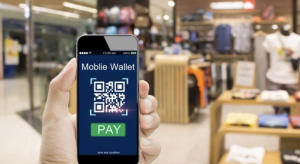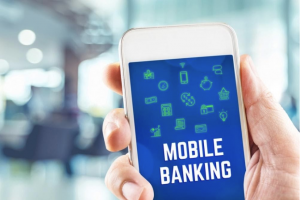Financial technology, or FinTech for short, is one of the most exciting and fastest-growing areas in global business today. Fintech is beginning to disrupt the financial world. The financial industry is now more focused than ever on technological innovation than at any other time.
Blockchain, Artificial Intelligence (AI) and Machine Learning are some of the most used technologies in FinTech, offering the potential to play a bigger role to support banks, financial institutions, fintech startups, ventures and enterprises.
FinTech has shifted towards consumer-oriented services and various sectors such as retail, insurance, education, fundraising and many more. Fintech gives birth to Digital Wallets, Peer-to-Peer (P2P) lending, Crowdfunding, Mobile Banking and Biometric Recognition.
Digital Payment enables customers to make purchases hassle-free

Nowadays, customers desire a fast, easy-to-use and seamless payment experience. Digital payment allows users to pay for purchases worry-free with no hassle.
With digital wallets, users can make a mobile payment, proceed transactions and money transfer between bank accounts. Users can also store the details of their credit or debit cards in the wallets and make payments in retail shops and restaurants safely. They can even make onsite merchant payments and pay bills smoothly and securely. Some digital wallets enable users to store money in the form of cryptocurrencies.
Meanwhile, consumers can receive special offers, rewards, and discounts through their digital wallets and use reward points at checkout. Many consumers are in favour of a digital wallet that integrates loyalty programs that can be used at multiple merchants. As customers’ data are encrypted in digital wallets, their personal data storage is highly secure even though they lose their mobile phones.
Mobile Banking empowers customers to make transactions from smartphones

Mobile banking is a means for customers to monitor banking accounts and make transactions from their smartphones in the Fintech. Banks, financial institutions or fintech companies let their customers utilize mobile apps and so they can check deposits, account balance and more from smartphones.
Customers can transfer funds from their bank account to another account with a smartphone, from anywhere to everywhere. They can also pay bills, check account balance, statements, get alerts, study recent transactions, cancel ATM or credit cards.
Mobile banking enables customers to enjoy banking services close at hand, thereby taking care of financial chores and saving time. There is no need to go to a bank or ATM and wait for the bank to open to check account balance. Some mobile apps curated by banks enable customers to manage their fund investment and digital money in a bid to improve customers’ daily financial decisions.
The mobile banking appeals to customers with its speed, convenience and highly personalized real-time banking experiences. Customers can revel in personal banking services by tapping on the mobile banking apps and “middle-man” intervention are eliminated to speed up the transaction process.
Entrepreneurs raise funds from the community in Crowdfunding

An entrepreneur may think that they can only raise capital from investors, capitalists and banks outside of their own networks. Yet crowdfunding is a great way to allow entrepreneurs to raise funds from the community in exchange for their products and services and fund a venture.
To get started on the crowdfunding path to funding and exposure, entrepreneurs need to contact the chosen crowdfunding platform that best suits their campaign missions, values, purposes and shares their ventures’ messages. Crowdfunding not only allows entrepreneurs to present a business and product, but also gives them the ability to share the message behind it. People who view the entrepreneur’s campaign and are dedicated to making financial contribution strongly believe in the success of the venture in the long run.
Crowdfunding is an excellent way for entrepreneurs to receive the financing and exposure they need in order to help their ventures grow and succeed.
Peer-To-Peer Lending offers borrowers alternatives to traditional bank lenders
FinTech has fostered the development of the innovative peer-to-peer (P2P) lending model. P2P lending is ideal for individuals who want to avoid the high-interest rates on traditional bank loans and have flexible terms and a fast and convenient application process.
Most P2P platforms have a waiting list of investors to provide loans to borrowers and when the platform is combined with an automated matching process, it means turnaround time on getting money can be very quick.
P2P lending platforms eliminate the “middleman” or intermediaries and directly connect borrowers with potential lenders. Borrowers can often access loans with interest rates lower than they could obtain from traditional lenders like banks. Because peer-to-peer loans are unsecured, there is no need to provide any collateral, so borrowers do not need to tie any personal property to the deal, as is the case with many other types of borrowing.
Also, lenders may earn returns which is higher than the income generated through banks’ savings and investment vehicles. Also, they have access to flexible terms that allows them to add and withdraw funds easily, provided that there are other lenders available to replace them in the loans they wish to withdraw from.
Biometric Recognition boosts users’ data security and privacy

Safeguarding customers’ data security and privacy are the main concerns that need to be addressed with technological advancement. More banks, financial institutions and businesses are coming up to provide convenient biometric authentication processes to customers.
Biometric identification can be achieved on a mobile device via its built-in biometric sensors. High-end mobile devices have already embraced the facial recognition technology which is based upon measuring users’ faceprints to grant access to their accounts.
Also, more banks and businesses have already adopted Touch ID in their mobile banking apps. Biometrics such as thumbprints and facial recognition enables users’ biometric authentication and boost security to financial transactions.
In conclusion, Fintech is one of the most fastest-growing areas in global business. The launch of mobile banking can hugely reduce customer acquisition cost and operational costs as well as improve revenue for banks. Banks, financial institutions and ventures stand to benefit from the use of mobile wallets, digital payment, peer-to-peer lending and crowdfunding.
Explore more how NDN Group’s Fintech solutions can help your enterprises suit your customers’ needs and meet your business goals. Drop us a line at info@ndngroup.com to learn more about how our innovating technologies help expand your business.
